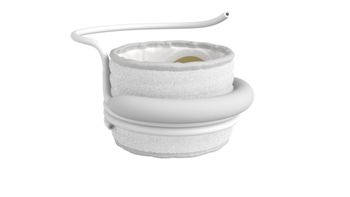
Two simple workflow tools cut physician message load by 16%
Key Takeaways
- Reassigning message responsibilities within care teams reduced primary care physicians' inbox loads by 16% and carbon copy messages by 65%.
- Implementing workflow tools, such as best practice standards and routing guides, improved message management and team dynamics.
A new study finds that clarifying team roles and routing protocols sharply reduced physician message burden without new tech or added costs.
A new study from the University of Michigan shows that rethinking how patient portal messages are routed, and by whom, can significantly reduce the inbox load on primary care physicians, without
The study, published in the
The key change: assigning message responsibilities more clearly across the care team.
“We were able to significantly reduce the volume of messages by simply outlining roles and routing guidance for common issues,” said the study’s lead author and clinical assistant professor, Nicole Hadeed, M.D., in a
A pandemic-era problem that never left
The volume of patient messages through
Researchers analyzed more than 340,000 messages across 31,000 patients over a one-year period. They found that a significant portion of message volume came not from patients but from internal routing inefficiencies, including duplicate messages sent to multiple staff or bounced among team members.
To address this, the clinic developed and implemented two simple tools:
- A set of “best practice standards” for managing and routing common messages.
- A “routing guide” clarifying which roles should handle what types of messages.
These tools were rolled out during meetings and huddles, and one staff member per week was temporarily assigned to manage the inbox on high-volume days.
Clearer roles and fewer clicks
Following the intervention, monthly messages per physician fell from 1,342 to 954. Messages sent directly to physicians dropped by 26%, and carbon copy messages declined from 4.4% of all messages to just 1.5%.
The percentage of portal message encounters involving physicians held steady, indicating the care team’s broader role in handling lower-acuity issues.
Survey data also pointed to improved team dynamics. Scores for clarity of expectations in portal messaging rose from 2.7 to 3.5 on a 6-point Likert scale. Staff reported that the routing guide, in particular, helped new team members get up to speed and made workflows more consistent.
“I like this document,” one medical assistant said in a post-intervention interview. “I feel like this document helps when you are orienting a new staff member to know the roles. It also says to you who gets what, where does this go.”
Staffing and sustainability challenges
The intervention did not come without complications, though. During the rollout period, the clinic faced a significant staffing shortage, which required physicians to take on more triage duties than anticipated. While the intervention still led to reduced message volume, the staff shortage may have skewed the degree of physician involvement.
“It’s pretty tough to route things to a team that is composed of one person who doesn’t have enough time to do their job,” one physician said.
Still, the study authors emphasized that the intervention’s success hinged not on added resources, but on clarifying how the existing team functions.
“While many clinician and staff reactions to the patient portal emphasize drowning under the brunt of clinical care happening over in-basket messages, it was evident that a significant proportion of messages are created by inefficient routing practices within the clinic itself, driven by a lack of transparency of each person’s role within the multidisciplinary team,” Hadeed said.
A model for inbox management?
The University of Michigan team believes their approach is both replicable and scalable. Unlike many tech-driven solutions, these tools require no EHR customization or new hires, just a clinic’s willingness to map its workflows and act on gaps.
The team plans to explore long-term sustainability next. While the initial intervention period lasted just four months, maintaining those gains as staff changes and workloads evolve will be key.
Ultimately, the authors suggest that other health systems take a similar approach to identifying local gaps in training and role clarification to enhance in-basket management, decrease volume and bolster well-being.
Newsletter
Stay informed and empowered with Medical Economics enewsletter, delivering expert insights, financial strategies, practice management tips and technology trends — tailored for today’s physicians.








